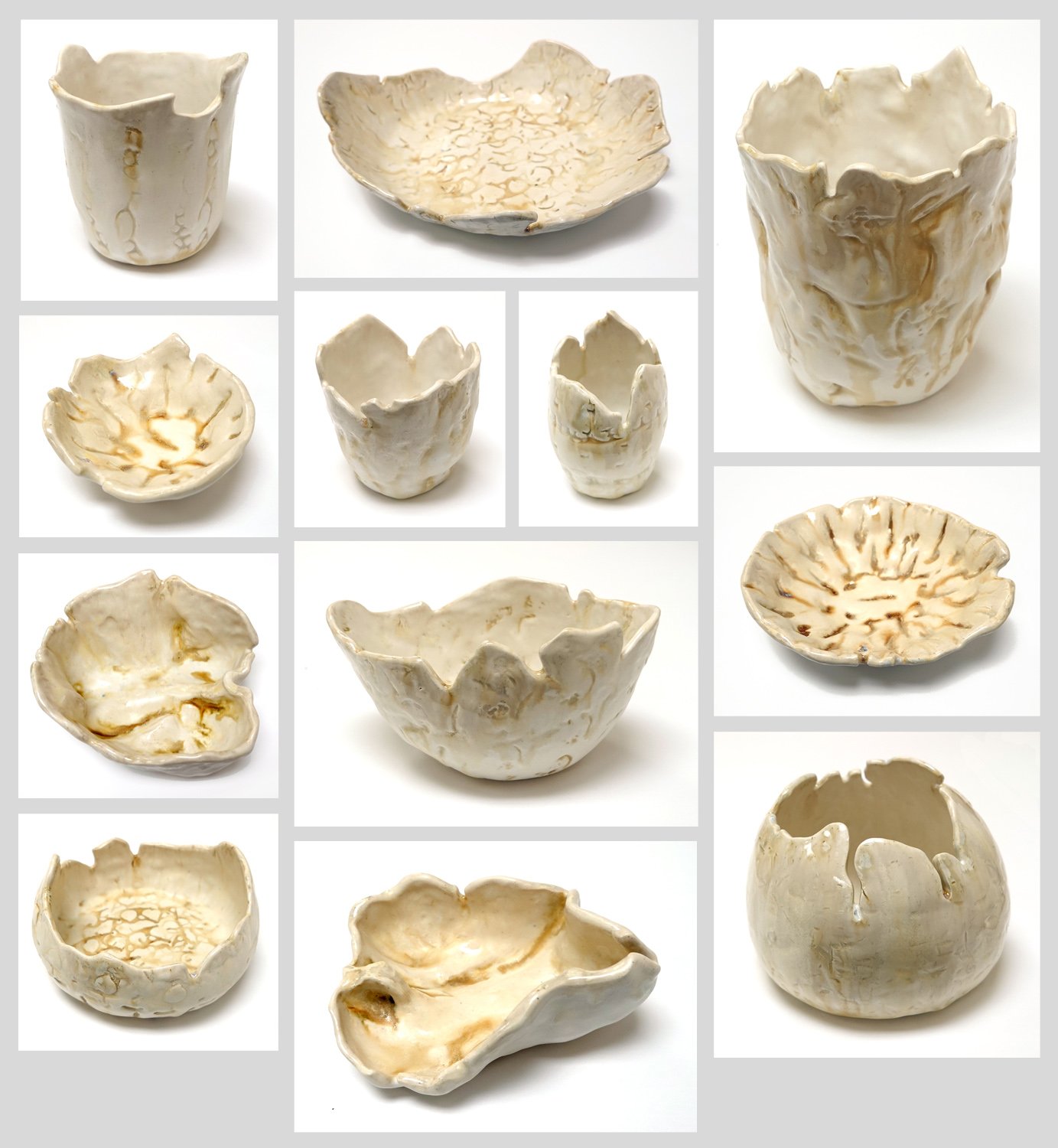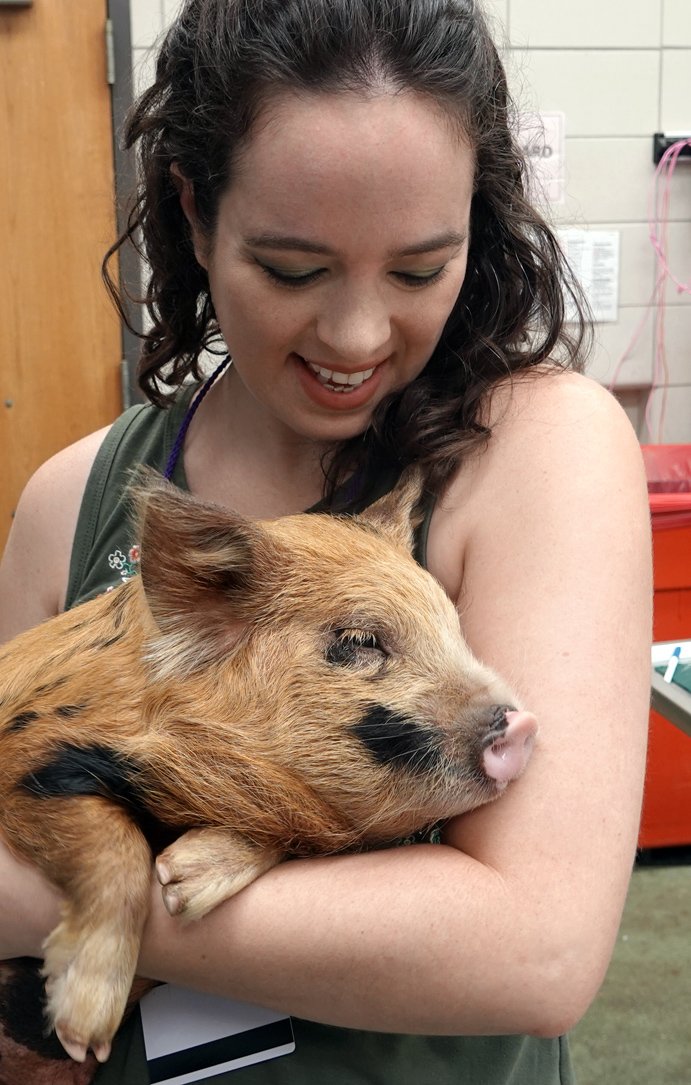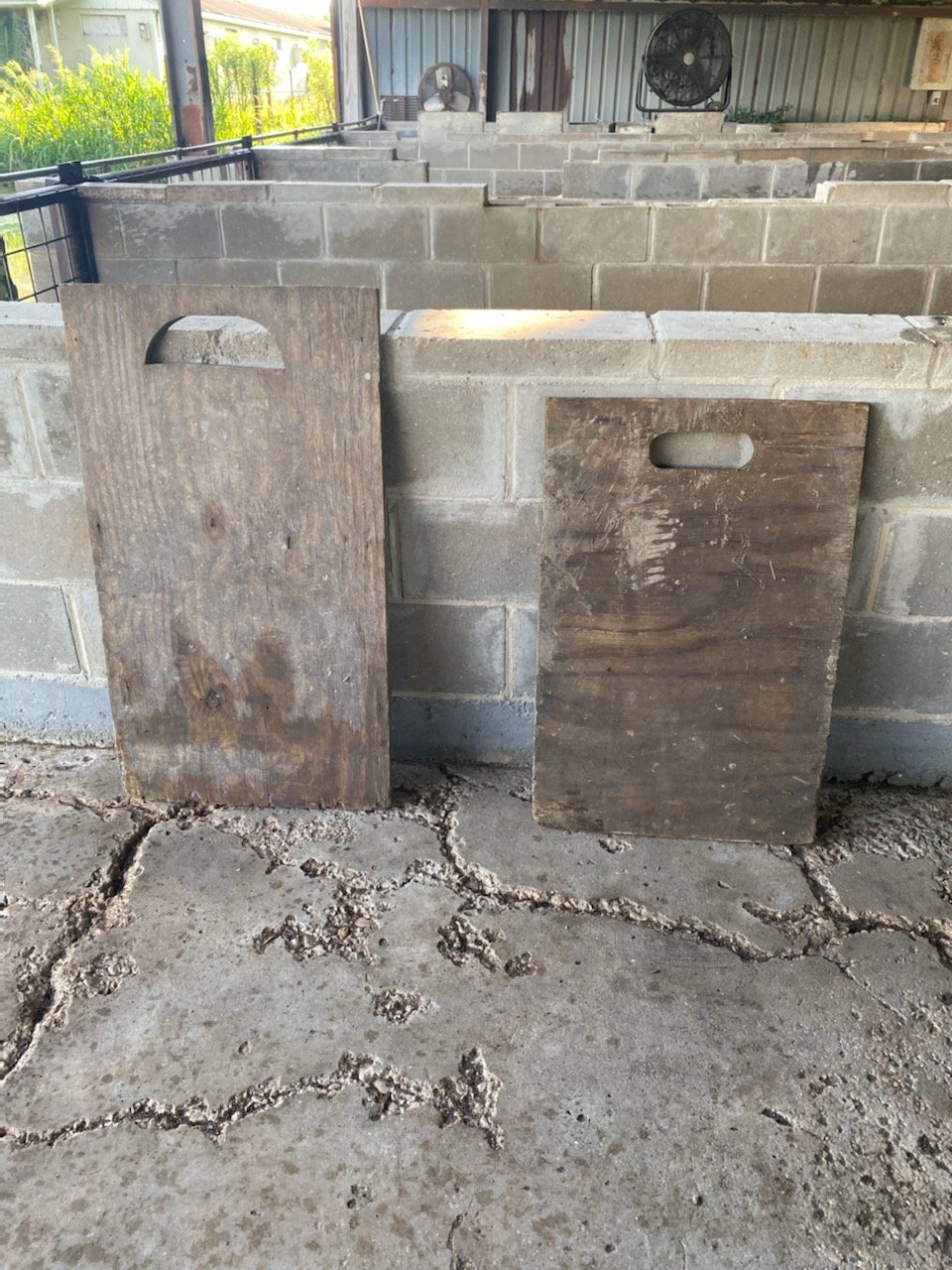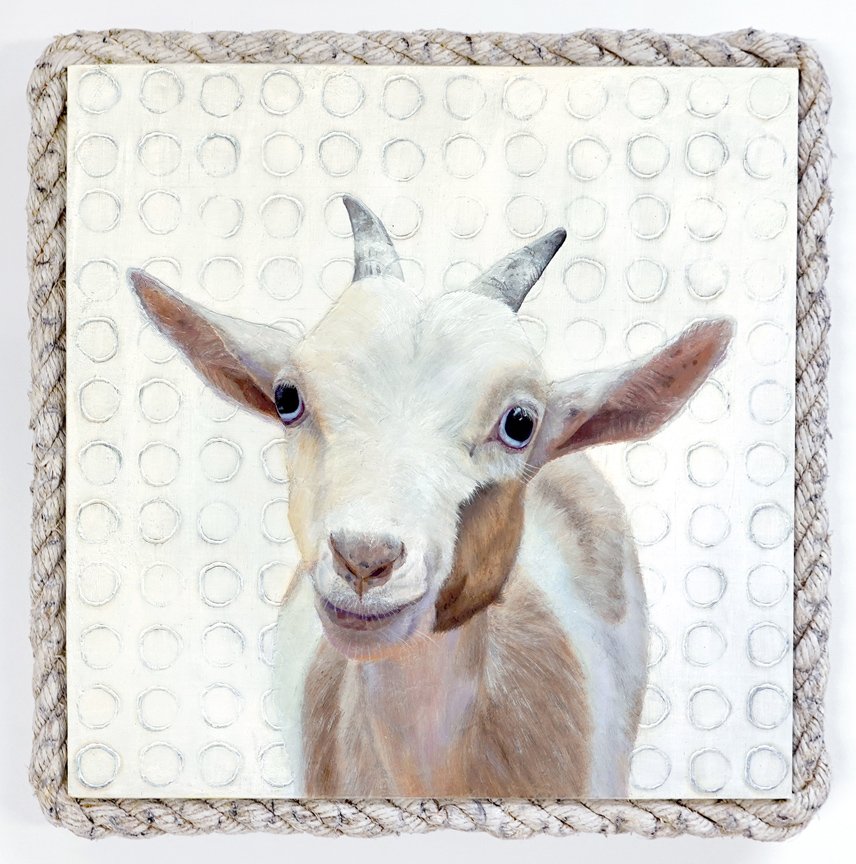After I was able to return to the studio from COVID, I felt a lot of self-pressure to complete all the work I had envisioned prior to getting sick and losing access for several days. I prioritized my mosquito painting, ceramics, and pig board piece first.
My very kind host Rob Carpenter had helped me order a raw poplar frame from his own framers, and he showed me how to assemble it that weekend. We ran into a bit of a snafu when the museum glass was 1/8” too long, but Michael’s was willing to trim it down (and shared that if it broke in the process they’d also be willing to recut a new piece at no additional cost since it was their error in the first place). I also have to give Michael’s, specifically one of its workers, huge credit as they mounted my mosquito netting to the matboard for me! I was willing to do it myself if need be, but the most logical process was to get the whole matboard in, apply matte medium to the whole face and press the netting on top with a large flat weight (like a piece of plywood) until dry, and then cut the matboard down to size and with the window. They agreed with me about that being the simplest way, and said that they’d take care of it since they’d be doing all the surrounding work to it anyhow! I feel like I got a little taste of what it must be like to have a professional studio assistant, and it is a very nice luxury… They also gave me free foamcore backing and put little metal tabs in as well. Once it was all assembled, Rob helped me wire it and it was finally done!
Switching gears, I was lucky that I had brought all my raw ware down to Southern Pottery Equipment to be bisque-fired just before I came down with COVID, and we decided together that given my timeline I’d go there to glaze it on site so that it could then instantly be put in the glaze firing. So on Tuesday, I headed over!
I had purchased three different glazes which in my head when combined together would give a bone-like appearance. The catch is that I was just guessing based off my previous experience with completely different glazes, and as I believe I mentioned before this was a one-shot, que será, será situation. It took me four hours to glaze all 17 ceramic vessels, but honestly I stopped because the shop was closing - I could probably have glazed for another hour more!
Much of the rest of the week was spent planning out how the show would be installed, tracking down pedestals, and finishing up the pig piece. I also recorded the Arts Council of Greater Baton Rouge podcast. Then I returned to fetch my glaze-fired ceramics! Unfortunately, none had been stilted as the shop hadn’t felt there was a need, but the satin mottle seemed to behave more as a hi-flow gloss and it ran enough to fuse a number of my pieces to the kiln shelf. A large bowl I had impressed with a pig skull fragmented into pieces, and another four pieces had pretty severe damage. One had moderate damage but was still displayable, and then another five or so had varying bottom detritus; I did the best I could to smooth them all out, but I only had a Dremel rotary tool on hand so I was much more limited than if I’d been back in the Morningside studio with our diamond grinders. Despite the damage, about half were completely unscathed and I think I ended up displaying 13 total in the show.
That weekend, I put the pedal to the metal in racing to finish a vulture sculpture I had begun weeks ago but then deprioritized. The one non-art event of the week I did sneak in was to get a haircut! I had looked at the Baton Rouge subreddit for curly hair specialists and there was a woman recommended at the local Supercuts - I decided to try her out, as the rest of the options were all $80+ and I was feeling tapped after outlaying $400 for my isolation housing on top of all the other costs of the residency.





























































